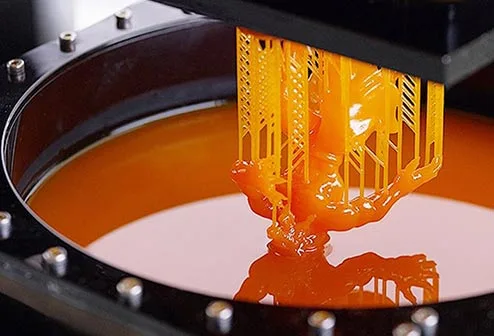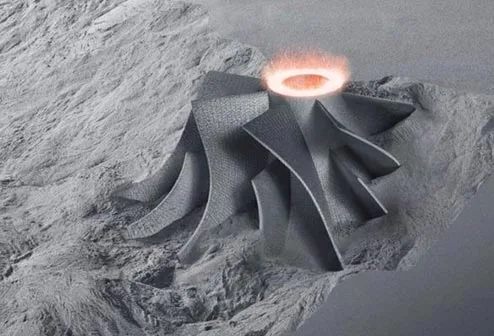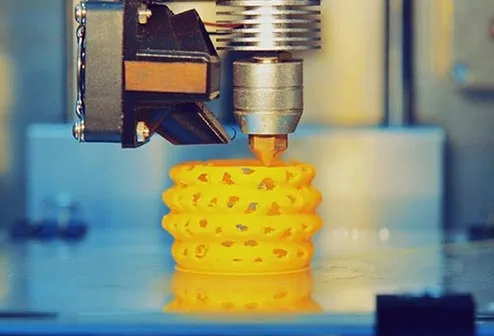There has been a fast rise in the use of CNC machining in the manufacturing sector in recent years because of its high precision and repeatability. However, getting to know the fundamentals of CNC machining will enable you to differentiate between the various CNC technologies that are currently accessible. CNC turning represents one of these cutting-edge technologies.
With the use of a turning center's or lathe's non-spinning cutting tool, materials are removed from a rotating, stiff workpiece. Depending on the kind of turning operation, components made using the CNC turning process might have a variety of sizes and shapes.
Although this idea appears to be very simple, fine CNC turning can be intricate. Let's say you're curious about the steps involved in this manufacturing process and what it takes to achieve the best outcomes. If so, this essay will cover any query you have about CNC turning.
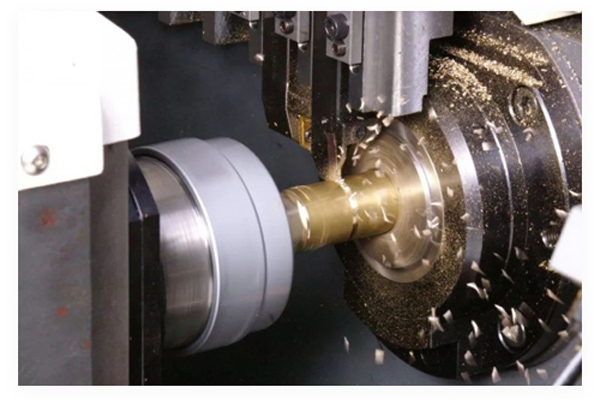
Turning is a machining technique where a rotating workpiece's external cylindrical surfaces, bores, and end faces are machined using a tool. It is possible to turn a workpiece's wide range of surfaces by either rotating it, cutting it, or utilizing additional tools.
CNC Turning
CNC turning is a technology that automates turning operations by controlling machine equipment using digital programming. CNC turning achieves automated processing with the use of CNC machine tools and computer technology, which can significantly increase output and quality. A large variety of items, such as shafts, sleeves, disc covers, cams turning, worm gears, and other processing components, are processed by CNC turning.
While the raw material rotates quickly, the turning center or lathe remains in place. A single-point cutting tool aids in shaping the material as the workpiece rotates along the dual CNC turning machine axis movement involved. The turning center or lathe is controlled by computer programs, which guarantees the manufacturing of incredibly accurate components.
CNC Turning vs. CNC Milling
Although they are two distinct processes, CNC turning and milling are sometimes confused. The workpiece is frequently secured to a bed during CNC milling and the majority of other subtractive CNC procedures, while a spinning tool slices the material. Turner CNC, on the other hand, uses a reverse procedure where the cutting bit stays stationary while the workpiece rotates.
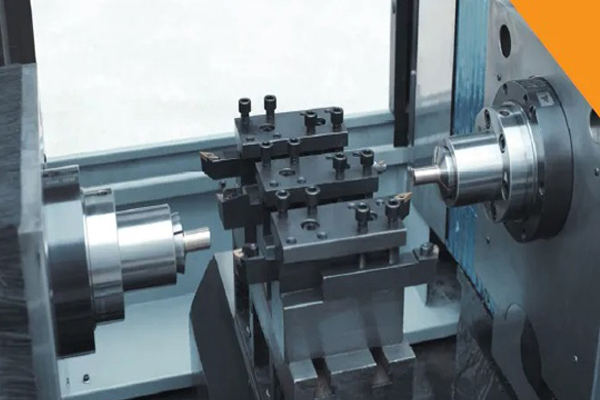
CNC turning is generally utilized to produce oblong or cylindrical-shaped components because of its manner of operation. It can, however, also produce a variety of axially symmetric shapes. Cones, disks, or a variety of shapes are some examples of these shapes. With specialized rotating tools, certain turning centers can even do polygonal turning operations. You can then make components that are square or hexagonal in shape.
Among the many advantages of CNC turning are the following:
Quicker Outcomes
When activities described by programming are executed on CNC lathes or turning centers, the likelihood of error is reduced. Hence, without compromising the quality of the end product, this machine can complete manufacturing faster. In conclusion, the required components can be obtained more quickly than with alternative solutions.
Flexibility
The flexibility of your applications is accommodated by the variety of sizes available for turning centers. Since this machine's tasks are preprogrammed, modification is rather simple. The operator has the option to complete your component by either building something completely different or making the appropriate programming tweaks to your CAM program. Therefore, if you require a large number of unique parts, you can depend on the same provider of precision CNC machining services.
Security
Manufacturing companies have stringent safety policies and procedures to ensure total safety. Because the turning machine is automatic, the operator's duties are limited to machine monitoring, resulting in less labor being needed. To reduce injury to the crew and prevent flying particles from the processed item, the lathe body also uses fully or partially enclosed safety equipment.
Accuracy
Using CAD or CAM files, the CNC turning machine can perform precise measurements and remove errors made by humans. Whether producing prototypes or finishing the full production cycle, experts can use state-of-the-art gear to offer exceptionally high accuracy. Because the machine is programmed, every cut is accurate. Stated differently, the last item produced in a run is the same as the initial piece.
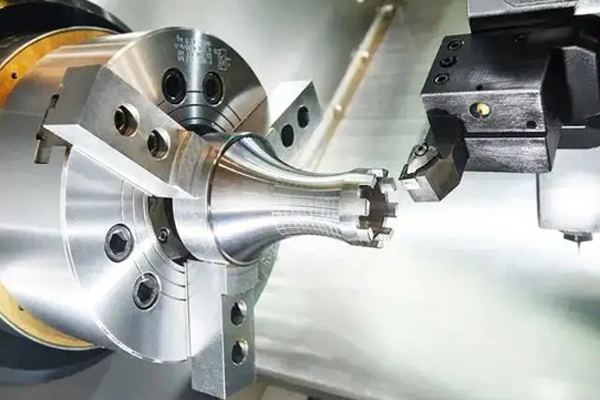
The turning manufacturing process can be very intricate. We will, however, provide you with a condensed, sequential description of the entire turning process, from concept to production. General CNC turning procedures are as follows:
First Step: convert the CNC program from the CAD design file.
Preparing a CAD file for CNC turning machine language translation is the initial step. There is no complex programming involved in this. Your design must already contain a few 2D sketches. If so, you must electronically record these drawings using a program like SolidWorks or AutoCAD.
A CAD file containing an electronic design can be converted into a CAM application. To export the drawing in CAM format, you can also utilize the same software tools that were previously stated. The program can then be used by the manufacturing engineer to determine whether the component can be manufactured.
Second Step: Get the CNC turning machine ready.
The machine setup is the next phase. Even with the majority of the procedures being automated, an operator is still required. The following procedures should be followed in order to properly set up the CNC turning lathe:
Ensure that the power is turned off. The process of CNC machining can be somewhat risky. Therefore, exercise extreme caution and inspect the power switches.
Fasten the component to the piece. The part must be held in place by the chuck while it is being turned. Erroneous component dimensions may arise from improper loading, which can be hazardous.
Put the tool turret in load. The turning process involves a number of tools, so you need to make sure you're selecting the appropriate tool for your particular finish. To ensure a smooth operation, the turret will assist in holding the greatest number of tools at once.
Make sure the calibration is correct. To make sure that the outcome satisfies the requirements, you must properly position the tool and the workpiece.
Transfer the CNC software. Uploading the CNC code into the device is the final step before the process begins.
At this point, there are two variables that you need to consider. The workpiece's rotational speed, or turning speed, is the first one. As the cutting tool advances along a spinning workpiece, its feed rate is the second variable.
These parameters need to be determined by a professional machinist because inaccurate estimations will damage the final product. Furthermore, inaccurate estimates for some materials may result in uneven finishes or workpiece damage that cannot be repaired.
Third Step: Produce the CNC Turned Parts
Making the desired portion is the last stage. Depending on the outcome you want, you can select from a variety of turning procedures. The number of cycles will also depend on how intricate the part is. The ultimate time spent on the component, which is essential for cost calculation, can be ascertained with the use of the cycle time calculation.
The turning cycle time will usually consist of:
Time spent loading. A cycle could need a different method of loading the workpiece onto the machinery, even though this is part of the setup.
Slashing the time. This is how long it takes to cut the piece of work. Cutting time is influenced by feed rate and cutting depth.
Idle moment. An idle operation is any process that doesn't involve cutting. For instance, adjusting the tool's movement or the turning center's settings.
The raw material utilized in the manufacturing process will determine the final product. The functionality and surface roughness of a plastic component will be different from those of a metal component.
For CNC turning, there are several kinds of lathe tools available. This allows you to operate on a workpiece in many processes. There are two types of these operations: internal and external. The component's outer diameter can be altered through external procedures. Internal operations, however, alter the inner diameter.
The cutting tool and the route taken to remove the materials determine each particular operation. Let's investigate them. The following are the primary types of turning:
1. Cylindrical turning: The exterior cylindrical surfaces of shaft-type items are typically machined using this most popular form of turning.
2. Face turning: This technique is used to machine a part's vertical surfaces or end faces.
3. Bore turning: To finish and enlarge holes with a greater diameter, employ this kind of turning.
4. Groove turning: This technique is used to create grooves on a workpiece's surface.
5. Thread Turning: Threaded items, such as bolts and nuts, are processed using thread turning.
6. Knorling turning: This technique, which is typically applied to improve friction, involves rolling a continuous spiral pattern on the workpiece's surface.
7. Cutting Turning: Cutting turning is mainly used for machining thin metal sheets or profiles.
These types of turning are selected according to different processing needs and workpiece materials to achieve the best processing results.
Appropriate Material for CNC Turning
For CNC machining operations, there are various materials available. Numerous of these materials can also be used for CNC turning tasks. Among them are:
Polymers
Metals
Glass
Wood
Wax
Because these materials have particular needs, like feed rate and turning speed, they require distinct lathes or turning centers.
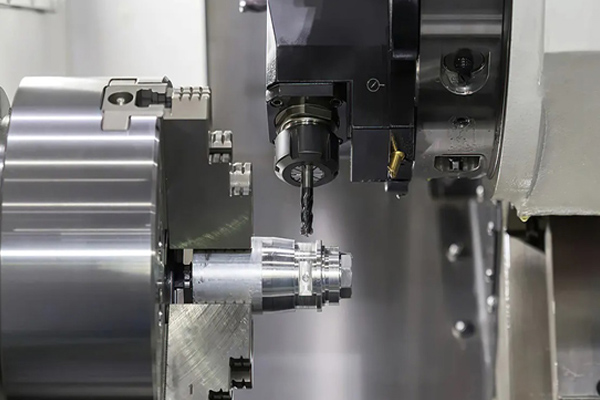
Even though CNC turning has many advantages, if you want the best CNC turning services, you need a trustworthy manufacturing partner. Your greatest option in this situation for any CNC machining services is Richconn.
Modern lathes and cutting-edge technologies are only two of the tools we have to assist you improve your custom machining experience. To supply you with high-quality parts that satisfy your needs, we also combine the knowledge and experience of our professionals with stringent quality control and quality assurance measures.
To sum up, CNC turning is a significant machining technique that is frequently employed in the manufacturing sector. It can save production costs and increase machining quality and efficiency by choosing turning tools and cutting parameters wisely. For additional expert guidance on this production procedure, contact Richconn now!
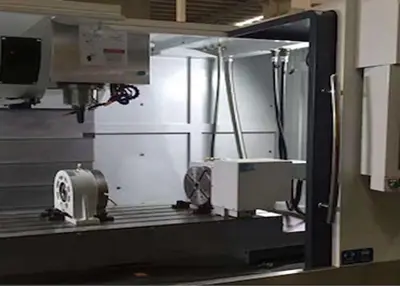 CNC Machining Technology and ProcessJuly 27, 2023CNC Machining TechnologyCNC machining technology mainly includes CNC machine tool machining technology and CNC machine tool programming technology. CNC machine tool machining technology directly compl...view
CNC Machining Technology and ProcessJuly 27, 2023CNC Machining TechnologyCNC machining technology mainly includes CNC machine tool machining technology and CNC machine tool programming technology. CNC machine tool machining technology directly compl...view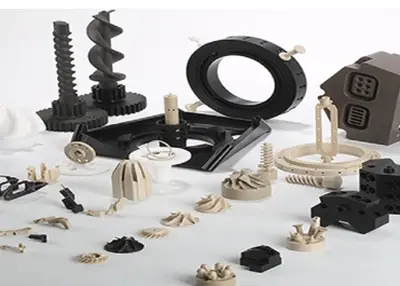 Cutting Costs, Not Quality: Exploring the Best Cheap CNC Material OptionsDecember 4, 2023In today's competitive market, every business is constantly finding ways to cut costs without compromising the quality of their products or services. When it comes to CNC machining, one of the mos...view
Cutting Costs, Not Quality: Exploring the Best Cheap CNC Material OptionsDecember 4, 2023In today's competitive market, every business is constantly finding ways to cut costs without compromising the quality of their products or services. When it comes to CNC machining, one of the mos...view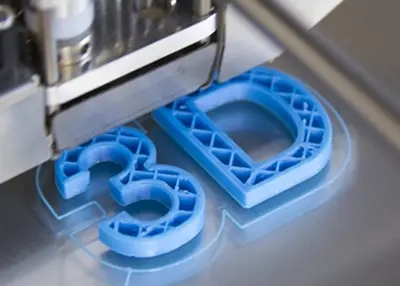 3D Printed Plastic: Prototypes: What's Next?October 10, 2023Manufacturing technologies are continually evolving, opening up new opportunities for manufacturers throughout the entire life cycle. More and more product developers are choosing to switch from one production process to another or switch between processes as needed.view
3D Printed Plastic: Prototypes: What's Next?October 10, 2023Manufacturing technologies are continually evolving, opening up new opportunities for manufacturers throughout the entire life cycle. More and more product developers are choosing to switch from one production process to another or switch between processes as needed.view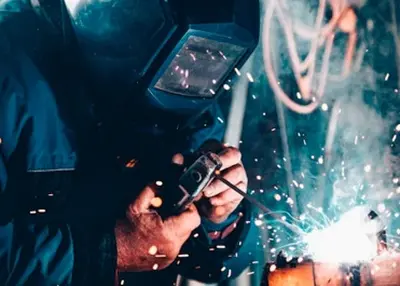 Titanium vs Steel: Is Titanium Stronger Than Steel?August 29, 2023Is titanium stronger than steel? Here's a brief guide that compares steel to titanium from different aspects.view
Titanium vs Steel: Is Titanium Stronger Than Steel?August 29, 2023Is titanium stronger than steel? Here's a brief guide that compares steel to titanium from different aspects.view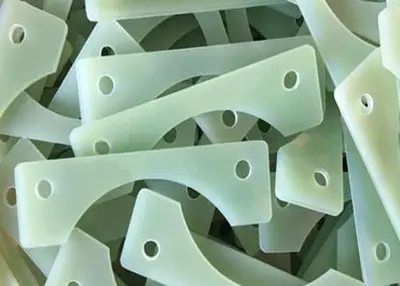 Waterborne Aluminum Powder Coating on(Nylon+Fiberglass )Composite Materials: The Innovative Path to the FutureAugust 8, 2023Waterborne aluminum powder coating on nylon+fiberglass composite materials is an ingenious technology that combines nylon and fiberglass to give a unique metallic appearance. This innovative coating t...view
Waterborne Aluminum Powder Coating on(Nylon+Fiberglass )Composite Materials: The Innovative Path to the FutureAugust 8, 2023Waterborne aluminum powder coating on nylon+fiberglass composite materials is an ingenious technology that combines nylon and fiberglass to give a unique metallic appearance. This innovative coating t...view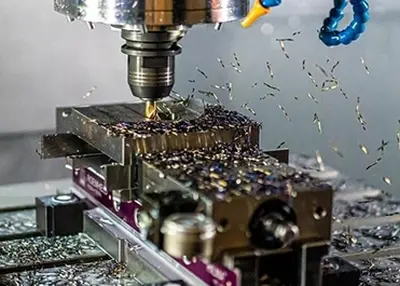 What Kind of Parts Are 5-Axis Suitable for Machining?October 30, 2023Over the past few years, CNC machining technology has evolved from simple machines to more complex ones. 5-axis CNC machining is one of the most advanced machining processes available today. It utilizes subtractive machining techniques that offer endless possibilities for part creation. The technology uses cutting tools that work on 5 axes to cut the workpiece into the desired shape and size.view
What Kind of Parts Are 5-Axis Suitable for Machining?October 30, 2023Over the past few years, CNC machining technology has evolved from simple machines to more complex ones. 5-axis CNC machining is one of the most advanced machining processes available today. It utilizes subtractive machining techniques that offer endless possibilities for part creation. The technology uses cutting tools that work on 5 axes to cut the workpiece into the desired shape and size.view
 EN
EN
 ru
ru 

